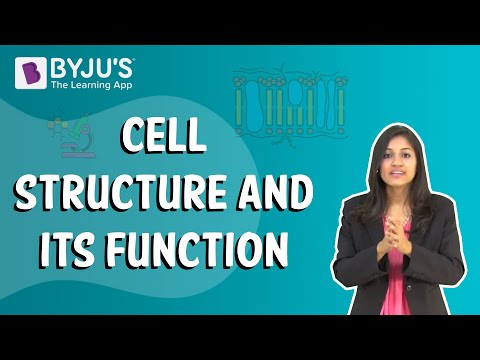What is a Cell?
A cell is defined as the most basic, structural and functional unit of all living organisms. Essentially, a cell is a structure that contains organelles which provide the necessary functions to sustain itself. However, not all cells are the same.
Plants have cells that are vastly different from animals. One of the primary differences between the two is the absence of cell walls in animal cells. Cells also vary in size, with the largest one in the human body being the egg or the female ovum. It measures roughly 1 millimetre across. The smallest cell is the granule cell which is found in the human cerebellum, measuring roughly around 4.5 micrometres in size.

For more information on Cell Structure and its Function Animal, watch the below video

Cell Theory
This scientific theory, initially formulated by Matthias Schleiden and Theodor Schwann, proposed that all living organisms are composed of cells, and new cells are formed from pre-existing cells. Even though the theory was put forth by Schleiden and Schwann, other notable scientists have contributed to this theory, turning its status from a theory to a universally accepted fact.
Prokaryotic Cells
Prokaryotic cells are unicellular microorganisms and one of the most ancient organisms on earth. There are many types of prokaryotes, some of which are extremophiles. Others are photoautotrophic, able to produce nutrients from the energy of the Sun.
A typical prokaryotic cell is made up of a single membrane, and therefore, all the reactions occur within the cytoplasm. They can be free-living or can be found within the gut of other organisms, such as ruminants (cows and buffaloes).
Eukaryotic Cells
Unlike prokaryotic cells, eukaryotic cells possess a nucleus enclosed within a membrane. All multicellular organisms are eukaryotic, and they fall under the domain of Eukaryota. Structurally, eukaryotic cells are much larger than prokaryotic cells, typically having a volume 10,000 times greater than prokaryotic cells. Eukaryotic cells also possess many membrane-bound organelles devoted to various life functions.
Cell Organelles
Eukaryotes possess many cellular organelles that perform various functions. Some of these organelles, such as the cell wall, are exclusive to plant cells.
- Cell Membrane
- Cell wall
- Mitochondria
- Plastids
- Ribosomes
- Cytoskeletons
- Centrosome
- Centrioles
- Nucleus
- Microbodies
- Cilia and Flagella
- Endomembrane systems which consist of the endoplasmic reticulum and Golgi apparatus. Plant cells have centrally placed vacuoles.
Cell: The Unit of Life – Class 11 MCQs
- Choose the incorrect option:
- Robert Brown discovered the cell
- Schleiden and Schwann introduced the Cell Theory
- Virchow gave the concept of cells forming from pre-existing cells
- New cells are formed from ________
- Existing cells
- Fermentation
- Spontaneously
- Which of the following is correct?
- All cells have a nucleus.
- Animal cells have a cell wall.
- Plastids are found only in plant cells.
- Why are cell walls exclusive to plant cells?
- What are the flat, membranous sacs in the stroma called?
- What are the disc-shaped elements in the Golgi apparatus called?
- State the characteristics of prokaryotic cells.
| Also Access |
| NCERT Solutions for Class 11 Biology Chapter 8 |
| NCERT Exemplar for Class 11 Biology Chapter 8 |
To learn more about Cell: The Unit of Life Class 11 or other related topics, please register at BYJU’S.
Frequently Asked Questions on CBSE Class 11 Biology Notes Chapter 8 Cell-The Unit of Life
What are the functions of the mitochondria?
Mitochondria are membrane-bound cell organelles that generate most of the chemical energy needed to power the cell’s biochemical reactions.
What are flagella, and what are its functions?
Flagellum is primarily a motility organelle that enables movement and chemotaxis. In addition to motility, flagella possess several other functions that differ between bacteria and during the bacterial life cycle.
What are the main functions of the Golgi apparatus?
The Golgi apparatus is responsible for transporting, modifying, and packaging proteins and lipids into vesicles for delivery to targeted destinations.
Comments